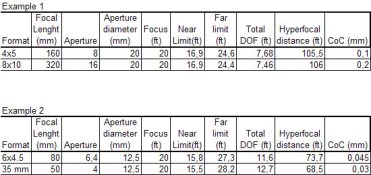As the focal length of a lens increases the DOF decreases..I believe that stands for the most part with all formats. Switching between formats and lenses one might notice a difference, but if using the appropriate lens for a particular format things should fall into place. You have to test this with the same subject, same distance different formats, same f-stop. As always there is some interesting technical information here but again I believe understanding the basics of this is key.
Just my thought.
Just my thought.



 But it would be an easy test staying with one format and switching lenses but not distance from subject with constant DOF. Then like your pictures he would see the difference..
But it would be an easy test staying with one format and switching lenses but not distance from subject with constant DOF. Then like your pictures he would see the difference..